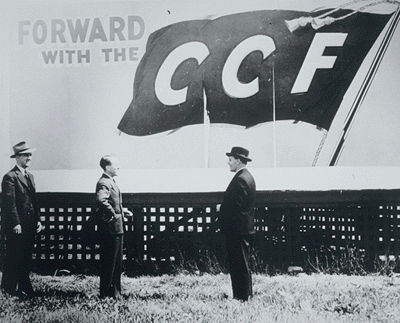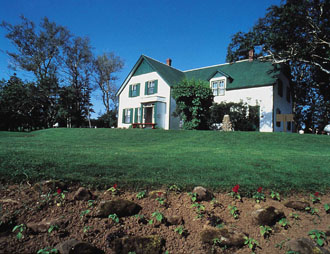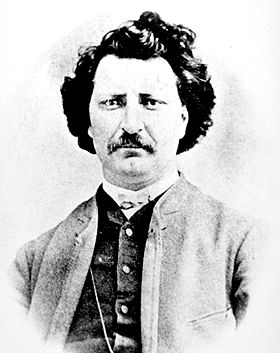How do you get from Anne to the Red River Settlement?
In this round of six degrees of Canadian history, we start with a spunky youth from Prince Edward Island and point the Red River carts west. The Red River Colony was a colonial settlement established in 1812, the early period of British North American westward expansion, and would later become part of the province of Manitoba. So how is it related to Anne of Green Gables, the best-selling tale of an 11-year-old orphan girl? It’s a real trip.
The following article is from our Six Degrees of Canadian History series. Past series are not updated.Anne of Green Gables

Lucy Maud Montgomery’s Anne of Green Gables is the first in a series of eight novels about Anne Shirley, a plucky redheaded girl adopted by middle-aged siblings on Prince Edward Island. Wildly popular since its publication in 1908, the novel’s appeal lies in Anne's development as a precociously imaginative and articulate but sensitive child-heroine. Her passage from childhood into adolescence has been published in numerous editions, translated into at least 15 languages and made into numerous TV movies.
In 1965, the Charlottetown Festival commissioned Anne of Green Gables, The Musical™, for which arts impresario Mavor Moore supplied additional lyrics.
Mavor Moore
A multi-faceted theatre artist and a founding father of many of the country’s key arts organizations, Mavor Moore was one of the most influential figures in the arts in Canada. He was the first production chief for CBC TV, the first artist to chair the Canada Council, and the founding director of the Charlottetown Festival and the St. Lawrence Centre for the Arts. He also wrote more than 100 works for the stage, radio and television, and was credited with making “the greatest contribution to musical theatre in Canada.” He was made an Officer of the Order of Canada in 1973 and a Companion in 1988, and was named to the Order of British Columbia. He also received the Molson Prize and a Governor General’s Award for Lifetime Artistic Achievement, among many other honours.
Among his many writing credits, Moore wrote the English libretto for what is arguably Canada’s most famous opera, Louis Riel.
Louis Riel

Louis Riel was a Métis leader and a founder of Manitoba. He led two popular Métis governments, was central in bringing Manitoba into Confederation, and was executed for high treason for his role in the 1885 resistance to Canadian encroachment on Métis lands. Canadian historians initially dismissed Riel as a rebel, although many now sympathize with Riel as a Métis leader who fought to protect his people from the federal government.
Riel was a central figure in the Red River and North-West resistances.
North-West Resistance

The North-West Resistance was a five-month insurgency against the Canadian government, fought mainly by Métis, Cree, Siksika, Kainai, Piikuni and Saulteaux in what is now Saskatchewan and Alberta. It was caused by rising fear and insecurity among Métis and Aboriginal peoples, as well as white settlers of the rapidly changing West. A series of battles and other outbreaks of violence in 1885 left hundreds of people dead. The result was the permanent enforcement of Canadian law in the West, the subjugation of Métis and Plains nations, and the conviction and hanging of Louis Riel in Regina.
In 1885, Regina was the capital of the North-West Territories. After Alberta and Saskatchewan were carved from the territory in 1905, Regina became the seat of the Saskatchewan provincial government
Tommy Douglas

As premier of Saskatchewan from 1944 to 1961, Tommy Douglas led the first socialist government elected in Canada, the Co-operative Commonwealth Federation (CCF). He is often recognized as the father of socialized medicine in Canada. Douglas also helped establish democratic socialism in the mainstream of Canadian politics. After he resigned as premier in 1961, just before Saskatchewan devised its comprehensive health insurance plan, Douglas became founding leader of the federal New Democratic Party (NDP), created as a formal alliance between the CCF and organized labour.
Point Douglas, Winnipeg, where Tommy Douglas lived in the early 1910s, was named after another Thomas Douglas: the 5th Earl of Selkirk, who established the Red River Colony in 1812.
Red River Settlement

The Red River Colony, a key part of Manitoba's rich history, was a settlement on the Red and Assiniboine rivers whose boundaries crossed parts of what are now Manitoba and North Dakota. The colony grew despite times of extreme hardship into a cosmopolitan community. After arrangements were made to transfer the colony and the vast neighbouring territory of Rupert's Land to Canada — without consultation with the colony's inhabitants, or any guarantees of their political or property rights — it was the site of the Red River Resistance. The colony joined Canada as part of the province of Manitoba in 1870.

 Share on Facebook
Share on Facebook Share on X
Share on X Share by Email
Share by Email Share on Google Classroom
Share on Google Classroom
















